Voices cry out from the wilderness, unheard by many but not by you. You know that animals play a vital role in the natural world and you defend them against the forces that might destroy them. But you do not stand alone in this duty. You share a magical connection, a kinship with the spirits of the beasts and the fey that watch over them. Aided by their gifts, you defend these creatures and their homes and turn hunters into the hunted.
Below is a guide to the Circle of the Shepherd druid subclass, which appears in Xanathar’s Guide to Everything.
- Circle of the Shepherd Features
- Circle of the Shepherd Compared to Other Druid Subclasses
- Things to Keep in Mind
- Building a Circle of the Shepherd Druid
- Circle of the Shepherd Druid Sample Build
Circle of the Shepherd Features
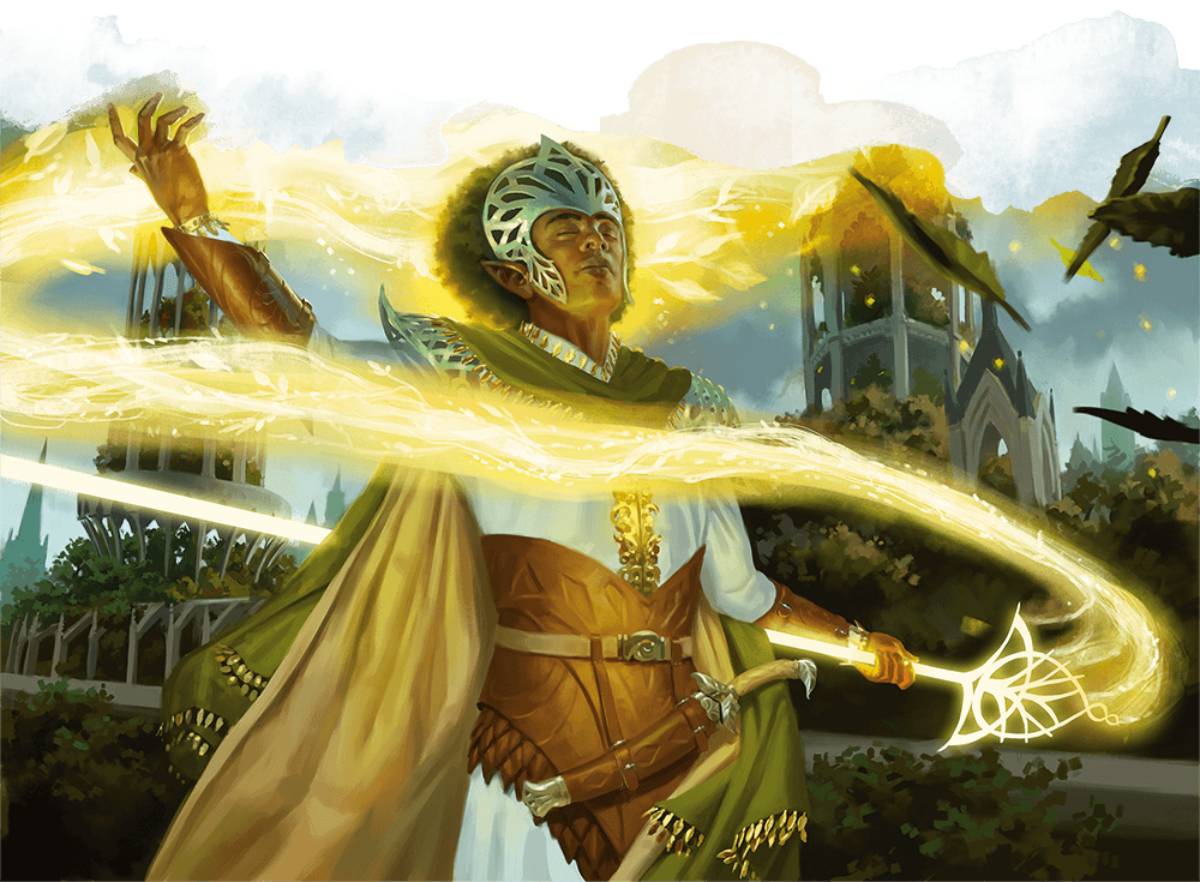
When you choose the Circle of the Shepherd subclass for your druid at 2nd level, you’re selecting a path that draws its power from a connection to the spirits of beasts and fey. A druid of this circle is an adept summoner, calling on spirit totems to give versatile boosts to their own abilities and health, as well as that of their allies, and creatures they have summoned.
Speech of the Woods (2nd level): The Circle of the Shepherd gains the ability to converse with fey and beasts. You can read, speak, and write in Sylvan, plus you can understand and be understood by beasts. This essentially gives you a permanent version of the speak with animals spell. It doesn’t allow you to control beasts, but it does make them accessible as NPCs to interact with, opening the door for creating alliances with animals for aid in battle, or to act as informants, spy networks, or even just fluffy friends.
Spirit Totem (2nd level): Once per short or long rest, you can call upon an incorporeal spirit as a bonus action. The spirit can appear at any point you see within 60 feet and creates a 30-foot radius aura. You can also move this aura anywhere within 60 feet as a bonus action. The effect of the aura depends on which spirit you summon. The effect lasts for 1 minute or until you are incapacitated. They each carry a different type of perk for you, your party, and beings that you conjure:
- The Bear Spirit helps to toughen creatures up.
- The Hawk Spirit helps grant advantage on attacks.
- The Unicorn Spirit helps creatures avoid and heal from damage.
Mighty Summoner (6th level): This feature empowers your summoning spells, such as conjure animals or conjure woodland beings. Your summoned beasts and fey gain an extra 2 hit points for every Hit Die it possesses. For example, a brown bear summoned using a 3rd-level spell slot would have an extra 8 hit points, because it has 4 Hit Dice. This also makes the natural attacks dealt by those summoned beings magical, overcoming immunities and resistances to nonmagical weapons.
Guardian Spirit (10th level): Now you’re able to combine your previous abilities for this subclass. Beasts or fey you’ve summoned with spells regain hit points equal to half your druid level whenever they end their turn inside your Spirit Totem’s aura. This stacks with those extra hit points and magical attacks, giving you a summoned squad of creatures that hit hard and can stay on their feet.
Faithful Summons (14th level): Your summoning skills have advanced to the point where they work even when you’re incapacitated. Once per long rest, if you drop to 0 hit points or are incapacitated against your will, you can use this ability to cast conjure animals as if it were a 9th-level spell. It will summon up to four beasts at a challenge rating of 2 or lower. No concentration is required for this casting, it will last for an hour unless you dismiss it. The creatures will protect you or attack your enemies unless you regain consciousness and issue commands. These protective spirits can go a long way toward preventing further damage, as well as still allowing you to participate in combat as a player while your character is making death saves.
Circle of the Shepherd Compared to Other Druid Subclasses
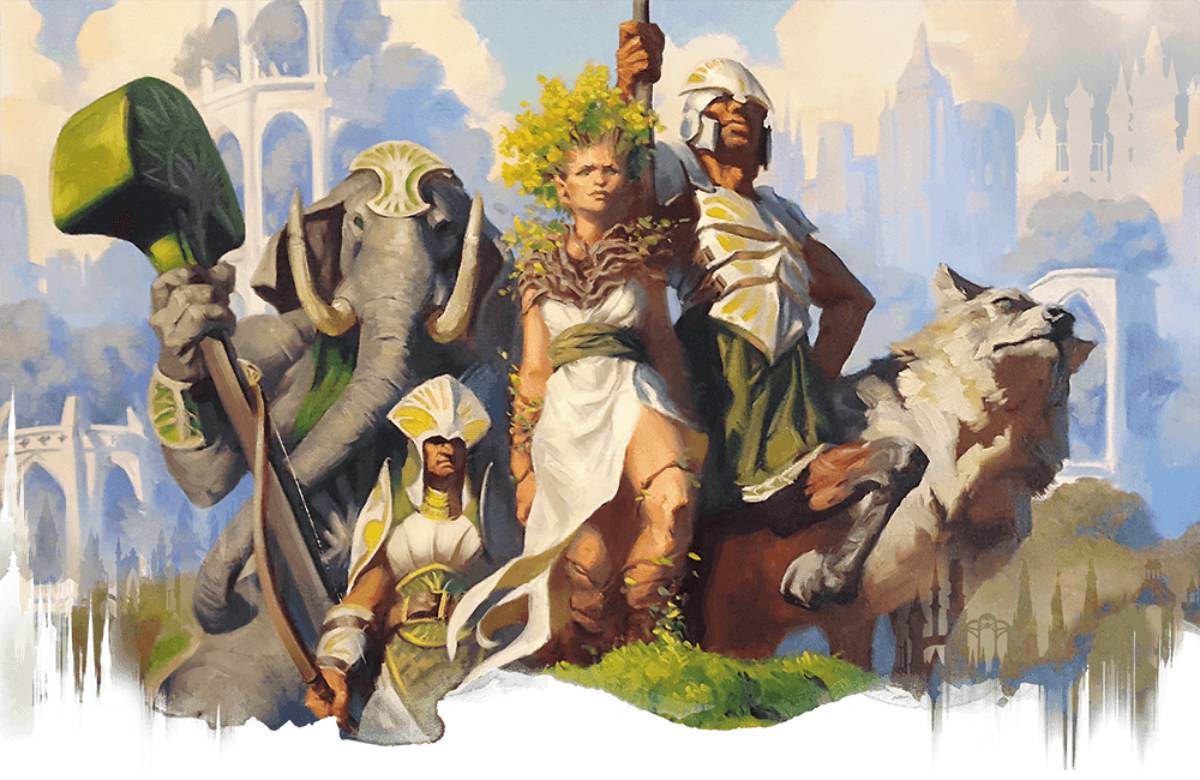
Druid subclasses all tend to lean into a different aspect of how a druid interacts with nature. While each Circle has its own nuances and flavor, they generally break down like this:
| Subclass | Key Focus |
| Circle of the Land, Circle of Dreams, Circle of Spores | Different types of environments (e.g. types of terrain, the reams of the Feywild, places of decay) |
| Circle of the Moon, Circle of Stars | Shapeshifting abilities granted by Wild Shape |
| Circle of Wildfire, Circle of the Shepherd | Summoning |
Circle of Wildfire is probably the closest sibling to the Circle of the Shepherd, but the wildfire spirit is much more specifically about fire as an element. Circle of the Shepherd is way more focused on creating a broad swath of summoning abilities and centers the druid’s relationship with beasts and fey over that of their environment.
While you still gain the Wild Shape abilities natural to all druids, the primary focus of a Circle of the Shepherd druid is going to be on using those summoning powers. Circle of the Shepherd druids can completely alter the nature of a battlefield by taking a specific set of spells from the druid’s repertoire and supercharging them. Each being you summon is like a roaming spell, able to independently focus on a different target than the others, while dealing magical damage in the process. Because of this, the ratio of spell slots utilized to the total damage dealt over the course of combat rounds is significantly higher than many other character types.
Meanwhile, the abilities gained from using the Spirit Totem aura can benefit those summoned creatures as well as the other members of your party. While your special animal squad is sinking their teeth into your enemies, your allies can gain advantage on attacks or have boosts to their health. And as long as you maintain your concentration on your conjuring spells, you are free to use your turn to make your own attacks or to use healing and support spells to boost your party.
Things to Keep in Mind
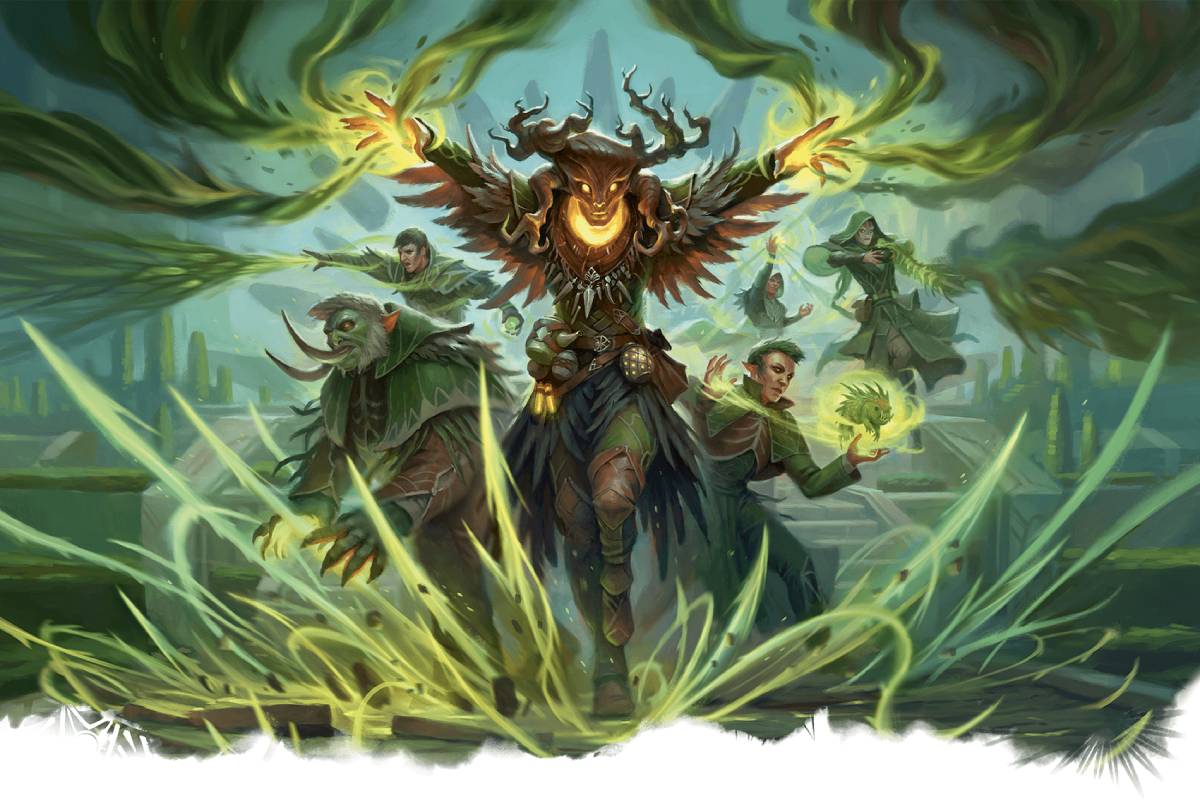
Avoiding being hit in combat is important for most characters but is especially true for a Circle of the Shepherd druid. The conjuration spells that make up a significant part of your skillset with these builds require concentration, so being able to avoid a hit and keep focused on your spellcasting is a major priority.
An important detail to remember is that druids can’t use armor or shields that are made of metal. Finding armor made of other materials or magical armor will help you mitigate that. Similarly, I’ll talk about some feats below that will also keep you up on your feet. You don’t need to spend an action on your turn to issue commands to your conjured animals, so it’s a good idea to have some non-concentration spells prepared for your character to cast. Cantrips like primal savagery could allow you to take more attacks without spending spell slots and thorn whip can pull creatures into your hawk spirit aura to get pummeled by your barbarian friend. Healing spells like cure wounds could help you to support your party on your turn while still dealing damage in the round on your conjured creatures’ turns.
Remember too that spells like conjure animals and conjure woodland beings don’t just summon one beast, they can summon many. Because so many of the Circle of the Shepherd features focus on heightening spells that conjure creatures, much of your combat time as a player of this subclass will revolve around controlling multiple beasts or fey at a time, in addition to the things your own character does. On average, you might be responsible for the actions of a handful of beings within the scope of combat rounds. This means that in any given round you’ll need to efficiently juggle the stat blocks, hit points, attack rolls, and even movement for multiple creatures in combat. It’s good to be sure you want to take on that level of admin duties and that this type of play fits in well with your DM and the table culture.
As you move up in levels you might find it more effective to use higher level spell slots to conjure a single higher CR beast via conjure fey to deal higher amounts of damage on a singular target. Be careful though, when you lose concentration on a conjure fey spell, the summoned being is hostile to you, so you’ll certainly want to make sure you’re able to maintain concentration before bringing a tyrannosaurus rex into the fray. For a safer approach to single-target summons that scale with your spell slots, take a look at the summoning spells from Tasha's Cauldron of Everything, like summon beast, summon fey, and summon elemental.
Building a Circle of the Shepherd Druid
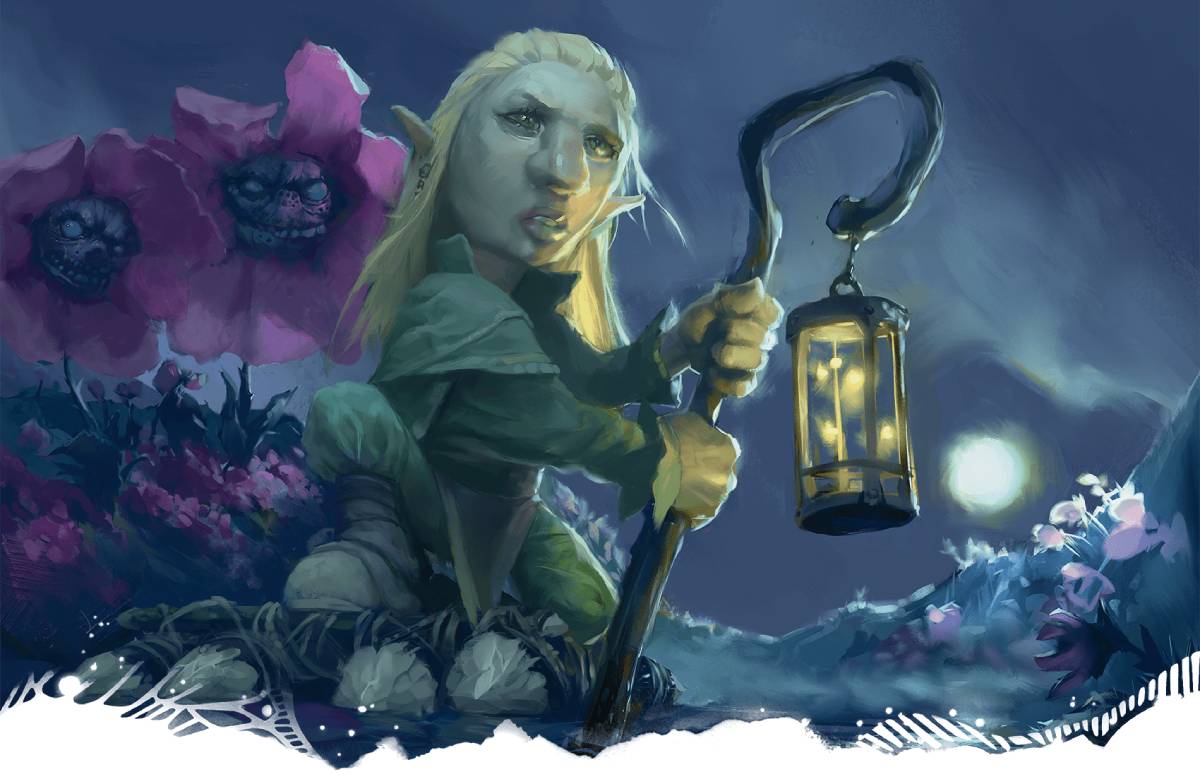
Ability Scores
Most druids will want to focus on Wisdom in order to empower their spellcasting, but the Circle of the Shepherd’s focus on summoning spells actually means that you can give a little more consideration to boosting some of your other ability scores instead. A moderate-to-good Wisdom score is still useful for your other spellcasting, and boosts Animal Handling checks to help you convince beasts you haven’t summoned to assist you.
I recommend giving some attention to your Dexterity score to help boost your Armor Class (AC) since you can’t wear metal armor. Next, make sure to prioritize Constitution to help you maintain concentration and boost your hit points.
Character Creation
Although any species can be a Circle of the Shepherd druid, here are my picks for species that are a thematic fit:
- Elves: Of the various subsets of elves, wood elves tend to already lean toward the type of character archetypes that fit druids well to begin with. For a seafaring or coastal-based game, a sea elf might have particular ties to the creatures of the waves they inhabit. Similarly, eladrin can work well with the ties to fey spirits that a Circle of the Shepherd druid maintains.
- Forest Gnome: These little woodland folk are already apt to have befriended both beast and fey allies alike within the sylvan forests they call home. It makes sense that a forest gnome who has headed out on adventures might forge a deeper connection to those friendships and alliances for mutual aid in their travels.
- Hexblood: This lineage from Van Richten’s Guide to Ravenloft are imbued with some level of eldritch magic or witchcraft, but often can result from fey energy. While many hexbloods are destined to turn into hags, leaning into this fey element of their nature could tie well into whatever backstory led your druid to join the Circle of the Shepherd.
- Hobgoblin: The ancient Feywild origins of goblinkin like the hobgoblins make them prime candidates for the connection a Circle of the Shepherd druid has with fey spirits. The hobgoblin can take the Help action as a bonus action, which comes with some additional buffs that play well with the subclass.
- Shifter: Descended from lycanthropic ancestors, the bestial elements of a shifter feels like a natural choice for a Circle of the Shepherd druid. Plus, a shifter with the Beasthide trait can give you a boost to your AC and give you some temporary hit points.
- Triton: Similar to sea elves, a triton’s typical sense of stewardship over the oceans lends itself well to a druid committed to protecting the beasts of the sea.
Feats
Feats are great for customizing your character. They help you hone in on a specialized skill set, add some uniqueness to your spellcasting, or give your character a stronger foundation. I’ve provided a few feats that may be useful for a Circle of the Shepherd druid. Unsurprisingly, most of them are designed to keep you conscious and casting.
- Lucky: Using your luck points to roll an extra dice for a saving throw will come in quite handy for maintaining concentration, and being able to force your enemies to reroll their attacks against you could prevent you from having to make the saving throw in the first place.
- Fey Touched: This feat is both on-theme for the fey elements of this Circle and has some good mechanical benefits. The free casting of misty step could help you scoot away to safety. The ability to take a 1st-level divination or enchantment spell could allow you to pick up command, letting you command enemies to grovel to give your creatures advantage on attacks, or even have the enemy flee so they can’t get close enough to attack you. Plus this feat allows you to take +1 to your Wisdom score, which provides a vital bonus if you have an odd Wisdom score or if you chose to focus on Constitution and Dexterity at character creation.
- Resilient: This feat allows you to increase a chosen ability score by 1, to a maximum of 20. It also gives you proficiency in saving throws using that chosen ability score. Since druids start with a proficiency in Wisdom and Intelligence, using this feat could allow you to gain a proficiency bonus on Constitution saving throws to help maintain your concentration.
- Skulker: Being able to hide when you’re lightly obscured can go a long way toward being able to avoid being targeted for attacks while your conjured allies deal damage to your enemies.
- Tough: Give your hit point maximum a healthy boost with this feat, keeping you conscious and able to keep casting conjuration spells and keep your spirit totems active.
- War Caster: Getting advantage on Constitution saving throws to maintain concentration when you take damage makes this feat a no-brainer to take to keep your conjurations active during battle. Being able to cast while wielding a shield can also mean adding a wooden shield to boost your AC a bit.
Circle of the Shepherd Druid Sample Build
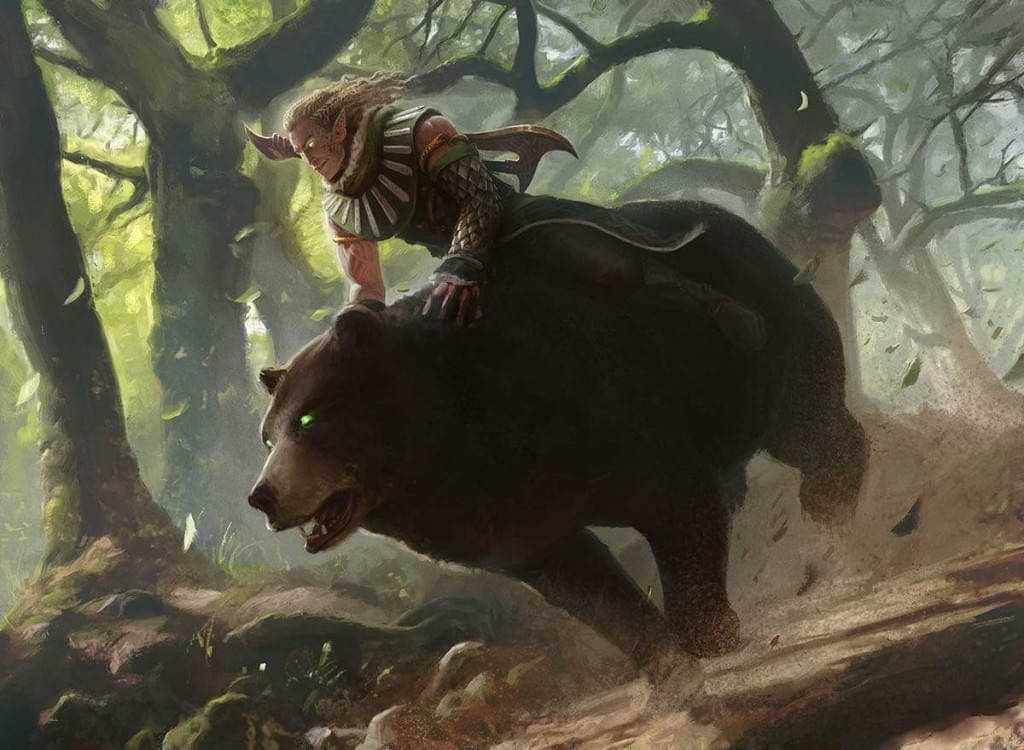
I’ve created a 14th-level Circle of the Shepherd druid and linked it below. I decided to make her a human so that her druid abilities would take center stage over species traits she might have had, but I chose the variant human rules from the Player’s Handbook so that I could start her off with a feat, for which I chose War Caster.
This druid is an outlander, likely someone who lives in the wilds relatively close to—but disconnected from—a larger city or town within the setting of a campaign. She has spent most of her life defending and protecting the animals around her from the hunters that come beyond the town’s borders. I added the Resilient feat to boost her Constitution, and gave her a wooden shield as starting equipment to help protect her. When selecting her currently prepared spells, I mostly avoided concentration spells aside from the conjuration spells she’ll regularly use, and played up her role as a boosting, support character by adding some healing spells, and some buffing ones like freedom of movement.
I put no magic items on her for this build, but some items she could benefit from would be a cloak of protection and shields or armor that would boost her AC further. Some slippers of spider climbing wouldn’t hurt for giving our druid more avenues to avoid attacks.
Making Your Own Druid
Now that you have a sense of what a Circle of the Shepherd druid brings to the table, you have a chance to consider what you can bring to them as a character. Think about where they came from, what caused them to form such a strong pact with beasts and fey? How trusting are they of humanoids or other civilized beings in the world they inhabit? Are they from a collective of other druids or have they been mostly a hermit till now?
Once you’re ready to make your character, hop into D&D Beyond’s character builder and bring your Circle of the Shepherd druid to life!
Riley Silverman (@rileyjsilverman) is a contributing writer to D&D Beyond, Nerdist, and SYFY Wire. She DMs the Theros-set Dice Ex Machina for the Saving Throw Show, and has been a player on the Wizards of the Coast-sponsored The Broken Pact. Riley also played as Braga in the official tabletop adaptation of the Rat Queens comic for HyperRPG, and currently plays as The Doctor on the Doctor Who RPG podcast The Game of Rassilon. She currently lives in Los Angeles.








-
View User Profile
-
Send Message
Posted Apr 26, 2023Great article
-
View User Profile
-
Send Message
Posted Apr 26, 2023Really like Circle of Shepard druids! Also great article
-
View User Profile
-
Send Message
Posted Apr 26, 2023I don’t get comparing wildfire and shepherd. Wildfire can summon one thing. The subclass focuses on a mix of damage and healing. Shepherd focuses on healing and summoning.
They are two very different subclasses. Otherwise I dig this. Circle of Shepherds is good and doesn’t get enough love.
-
View User Profile
-
Send Message
Posted Apr 27, 2023IMO Mordekainen Kobold is also a great racial choice. With ability "Draconic cry" you can give advantage to all your creatures and allies , also an extra cantrip from the sorcerer spell list is nice to have.
Great article
-
View User Profile
-
Send Message
Posted Apr 27, 2023Interesting
-
View User Profile
-
Send Message
Posted Apr 27, 2023I was hoping this article would clear up how Master Summoner works with Summon Beast and Summon Fey from Tasha's. The ability says the creature appears with 2 extra hit points per Hit Die, but the stat blocks for those "Summon" spells don't list Hit Dice. I wonder if it would be 2 extra hit points per spell slot level used (or maybe just 1 extra)?
-
View User Profile
-
Send Message
Posted Apr 27, 2023Nice article, great to see Druids get some love
-
View User Profile
-
Send Message
Posted Apr 27, 2023Winged Tieflings make good Sheppard Druids as you can fly above a target that is surrounded by your conjured animals then thorn whip them. this pulls them 10ft into the air causing them to take fall damage and be prone for your animals to attack with advantage.
-
View User Profile
-
Send Message
Posted Apr 27, 2023I was hoping this article would clear up how Master Summoner works with Summon Beast and Summon Fey from Tasha's. The ability says the creature appears with 2 extra hit points per Hit Die, but the stat blocks for those "Summon" spells don't list Hit Dice. I wonder if it would be 2 extra hit points per spell slot level used (or maybe just 1 extra)?
Yes, please address this DND Beyond/Wizards.
Now that you are owned by Wizards and have put this article up it would be a great place to take this question up :)
-
View User Profile
-
Send Message
Posted Apr 28, 2023I am playing a Circle of the Shepherds character and it has been very fun.
I usually cast a summoning spell and then sit back slinging magic stone from a distance.
This article suggested forest gnomes and sea elves which work thematically but aren't mechanically great. The ability to speak to animals overlaps, weakening the character slightly and the ability score increases don't line up. Water Genasi are great because of their +2 constitution, +1 wisdom, their extra spells, and their swim speed makes them more maneuverable.
When roleplaying, I like emphasizing the shepherds part of the circle. I play my character as very protective and caring. He won't hesitate to defend his "flock" from danger, but he considers the whole of nature as under his protection. I make him protective of other people as well, he isn't the type of druid to go against all of civilization, unless they are actively harming others. He also carries a shepherd's crook and wields a sling for magic stone.
The reason why he is always summoning monsters out of the blue is that he once saved a powerful fey being who was imprisoned by a hag. The fey creature was an Archfey and promised him that he could call upon the fey's legions whenever he was in need. So now he summons creatures from the Archfey's army and uses them to shepherd others.
By the way, these articles have been great. There has been some awesome art in them too.
-
View User Profile
-
Send Message
Posted Apr 28, 2023Great. Now I want to play one.
-
View User Profile
-
Send Message
Posted Apr 28, 2023yeah MTG art are awesome!
-
View User Profile
-
Send Message
Posted Apr 28, 2023I just feel like it's a lost opportunity that the new summon spells that only summon one creature don't use hit dies in the stat blocks of the creatures, so the only option available for the Shepherd druid to summon are those convoluted spells that summon random and lots of creatures, spells like summon fey and summon beast should be compatible with this class to be a more "elegant" solution for the bogging down of action economy.
-
View User Profile
-
Send Message
Posted Apr 29, 2023Good article, just finished a years long campaign playing a CoS Druid and loved it. It was a better healer option than cleric for my group and the summons still made engaging in battle an option.
I will say, starting this article with the least druid-like art of a muzzled bear looking forlorn doesn't fit with the spirit of the CoS Druid at all!
-
View User Profile
-
Send Message
Posted Apr 29, 2023I feel like the healing output was really undersold in this article. In my game where I play a level 16 Shepherd Druid, I am consistently outputting substantial healing numbers with the Unicorn spirit. Fully dove into the battlefield tactician/healer role and have loved every minute of it. The extra +16 healing to everyone within 30 ft of my unicorn is an amazing asset.
-
View User Profile
-
Send Message
Posted Apr 30, 2023I feel the same about the hit die situation between conjuring and summoning. It can totally be house ruled but it would be neat to have a semi official ruling on this. I've just been giving summons a bonus based on the level of the spell, not the hit dice.
-
View User Profile
-
Send Message
Posted Apr 30, 2023Agreed that we really need an errata to add in hit dice for the creatures summoned by summon beast and summon fey (while they're at it they probably need to add them at least for summon elemental, summon celestial, and wildfire spirits as well since all could theoretically be targeted by planar binding and then need to heal during a short rest). 1 hit dice per spell level would be the minimum and is how they handled hit dice in the summon draconic spirit spell. However it's worth considering that really doesn't compare at all favorably with even a single CR 2 beast summoned by conjure animals. No CR 2 beast has less than 4 hit dice and one third of all published CR 2 beasts have 8 hit dice. The average is about 6 hit dice for CR2 beasts. Having mighty conjurer help only half as much for summoned beast/fey as it does for conjured animals is a bummer. That doesn't even consider the massive bonus hp spike you get from summoning more than 1 creature with conjure animals.
An alternative would be to scale the hit dice off the caster's level like they do in the drakewarden drake companion, battlesmith steel companion, tasha's beastmaster companions, and the onednd pact familiar spell. This approach would make tasha's summons mechanically viable as an alternative to conjure animals for many more shepherds. It would also be in line with the conjuration wizard's bonus 30 temp hp per conjured creature starting at level 14 or the necromancy wizard's 1 bonus hp per caster level for summoned undead starting at level 6 (remember they also get to target a second corpse for every casting so it's actually 2 bonus hp per caster level for every casting).
-
View User Profile
-
Send Message
Posted May 1, 2023One of my favorite subclasses! My first long-term character was a shepherd druid, and I loved her to death. She was an ornery character, who got along far better with birds than with people. At one point, the party even got to use my giant eagle summons as mounts. So many great shenanigans
-
View User Profile
-
Send Message
Posted May 1, 2023Great article. Gonna be playing a shepherd druid in a zombie apocalypse campaign soon!
-
View User Profile
-
Send Message
Posted May 6, 2023looks interesting, thanks!